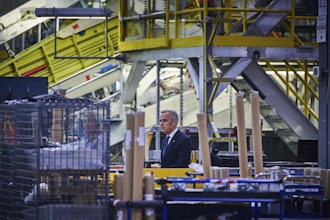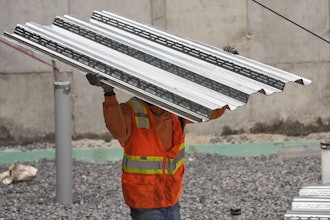Recently, McGladrey released the 2012 McGladrey Manufacturing & Distribution Monitor report, highlighting the trends in manufacturing and the supply chain as reported by middle-market manufacturers and distributors.
Below is a short Q&A with Karen Kurek, National Manufacturing & Distribution Practice Leader at McGladrey, on the recent survey results. To download the full survey, please visit www.mcgladrey.com.
ID: It appears that manufacturers and distributors in general are pretty optimistic about their personal businesses and that they are going to be making gains in the next year as the economy continues to recover. But they are not so optimistic about the economy at large, at home or abroad. Can you speak about to why that is?
Kurek: A couple of things – the report shows that the optimism this year has fallen from about 62 percent last year to 47 percent on the U.S. economy, and for the world economy, the rating took a bigger plunge. Last year, 50 percent of manufacturers were optimistic and now only 17 percent are. First of all, on the world economy, there’s a sense that manufacturers and distributors have regarding the slowdown, particularly with what is happening in Europe and the slowdown in China and India. Manufacturers in the US make up more than 60 percent of all goods exported from the U.S. The participants who responded in the report are either directly exporting or in the supply chain of companies that export outside of the U.S. As the world economy starts to waver, it is concerning for them because it has a big impact on the demand for their products.
Regarding the U.S. economy, by far one of the biggest things on manufacturers' and distributors' minds is the expiration of the Bush era tax cuts that are going to happen at the end of this year, particularly the expiration of the individual tax rate cuts. The reason they are so concerned is that approximately 70 percent of middle-market manufacturers and distributors are organized as pass-through entities (i.e. LLCs, S Corps, Partnerships), and these entities are being taxed at individual rates. At the end of this year, individual personal tax rates are going to go up, and that is going to have a negative impact on manufacturers' and distributors' businesses. Almost 75 percent of the participants in the survey said that the end of the Bush era tax cuts will have a negative impact, and almost half said that they would be a major harm to their business. This is significant, especially now as manufacturers are trying to anticipate the impact this will have on their decisions to invest more into their businesses (i.e., if they will hire additional people or purchase more equipment).
Manufacturers and distributors are also concerned about the sequestration that is going to take place after Jan. 1, 2013. These mandatory budget cuts are a part of the ‘Fiscal Cliff’. One thing slated to be cut is defense spending. There are a lot of manufacturers who are suppliers to the defense contracting sector. Those cuts are going to have a negative impact on the aerospace sector of the manufacturing industry.
ID: Speaking, too, about the Bush tax cuts and cuts to defense. It is obviously a political year – what does this mean for the overall atmosphere in the manufacturing sector?
Kurek: According to the data, there is a lot of uncertainty about what is going to happen with taxes and budget cuts, we’ve seen a bit of waning in the optimism. One of the things in the report on employment numbers is that most of the manufacturers are looking to increase their workforce in the coming months, but the rate at which they want to increase has slowed a bit. The uncertainty is causing them to take pause on some of the decisions that they had made earlier in the year. There is another statistic that a lot of people in the manufacturing industry watch: the PMI or Purchasing Manager’s Index. When it is above 50, the manufacturing sector is expanding, if below - contracting. It was above 50 for 36 or 37 consecutive months, and over the last couple of months has dipped below 50. We are starting to see some hesitation with the uncertainty of the elections on the horizon and the slowdown in the overall global economy.
ID: In the report, you mention that people are adding more employees that can help them be more efficient – are we talking about a specific kind of employee, like a project manager - or just more employees in general?
Kurek: The types of employees manufacturers are looking for are in the production and operation areas, as well as engineering and R&D. More than 40 percent of manufacturers are having difficulty finding the right people with the right skills to fill these positions. There is a very big skills gap issue in the manufacturing industry, and it relates to these specific positions.
ID: Why do you think manufacturers are having a hard time finding these employees? Is it because in past years manufacturing hasn’t been the “end goal” for people going through research and engineering programs, and they are competing with more popular industries like healthcare and info tech?
Kurek: One of the most important factors is that for the past several years we haven’t done an adequate job in counseling our children about the opportunities that exist in the skills/technical trades. Many of us want all of our children to graduate from college, earn a four-year degree and then get a job. The reality is many students who attempt to earn four-year degrees either never graduate or, if they do earn a degree, the job they accept is not related to their field of study and the job is at a disappointing pay level. The economics of this scenario for these young adults can be devastating. Many students graduate from college with a huge amount of debt and limited prospects for meaningful employment. A larger proportion of our youth should be counseled into considering the technical trades (i.e. manufacturing, distribution, etc.). The types of skills that are needed now at manufacturing companies are much more complex than what they have been in the past. In the 1980s and 90s, high school graduates were able to walk into a factory and find some sort of entry-level position. In the past 20 years, however, U.S. manufacturers have become much more productive, efficient and automated, and they have implemented a lot of technology into their businesses, so even entry-level positions today require a certain skill set. Employees need to know how to run specialized equipment. They need to be able to work as a team, and understand lean manufacturing concepts. Often times, people entering the workforce out of high school don’t have the necessary skill set to enter into a manufacturing company. We don’t have as many vocational/technical career schools as we had in the past. Our children of the past generation have been discouraged from going into manufacturing or the technical trades. When you take a look at some of the large cuts over the past 10 years, people think that there are no jobs left in manufacturing. Actually, right now there are more than 350,000 positions open in the U.S. that manufacturers cannot fill.
Also, at the engineering and the R&D level, we have a shortage of people going into those fields. Recently, there has been a significant decline in the number of undergraduate degrees awarded in the fields of science, technology, engineering and math. We are not graduating enough people for these jobs. The manufacturing industry is a great place to have a career; it just needs to be common knowledge again. On Oct. 5, the U.S. is going to have a national manufacturing day where manufacturers all across the country will open up their doors so that high school students can visit the facilities and see what manufacturing is really about.
Other findings of the report show that manufacturers and distributors are focused on becoming learner and more efficient. Ninety-three percent of those that participated in the survey have lowered their costs through operational efficiency. The companies that reported that they were thriving and growing were those that invested more in process improvements and that had a continuous improvement type of culture. Those companies also are looking to spend more and invest more in IT infrastructure over the next year. More than 60 percent of the respondents indicated that they are going to spend their capital in the IT area.
As to how much they are investing in R&D, thriving and growing companies spend almost twice as much as companies that are holding their own or are in decline.
Also, when you take a look at productivity, those companies that are thriving and growing have a higher productivity per employee rate. Companies that have a continuous improvement mindset and continue to reinvest in their business, are seeing those investments manifest themselves in more productive and profitable companies.























